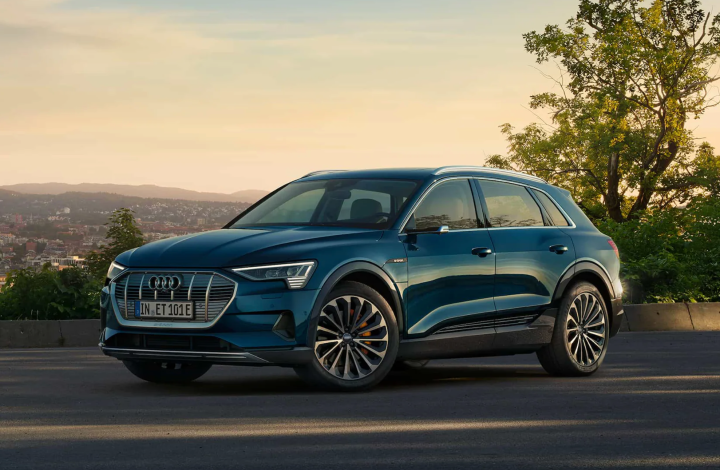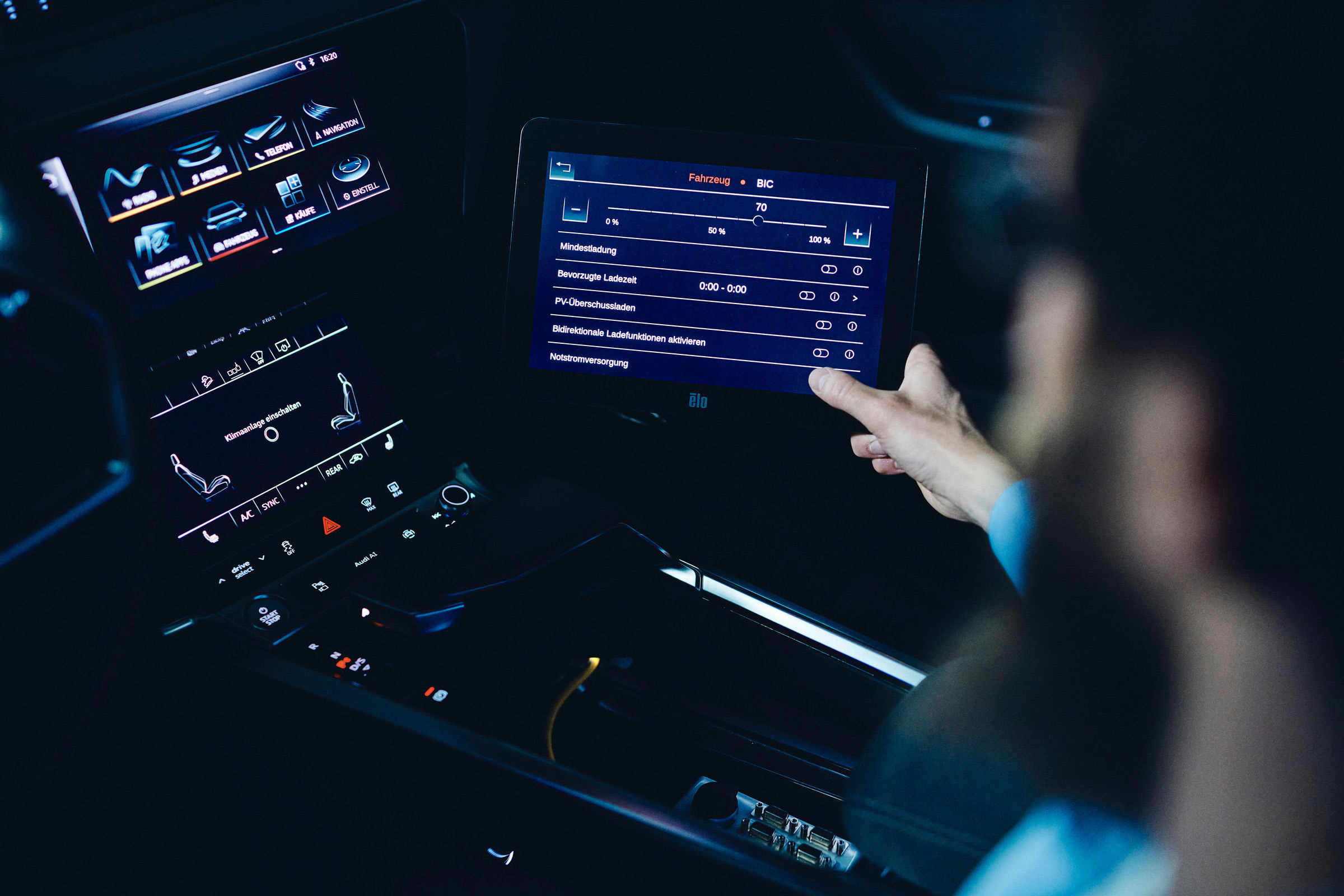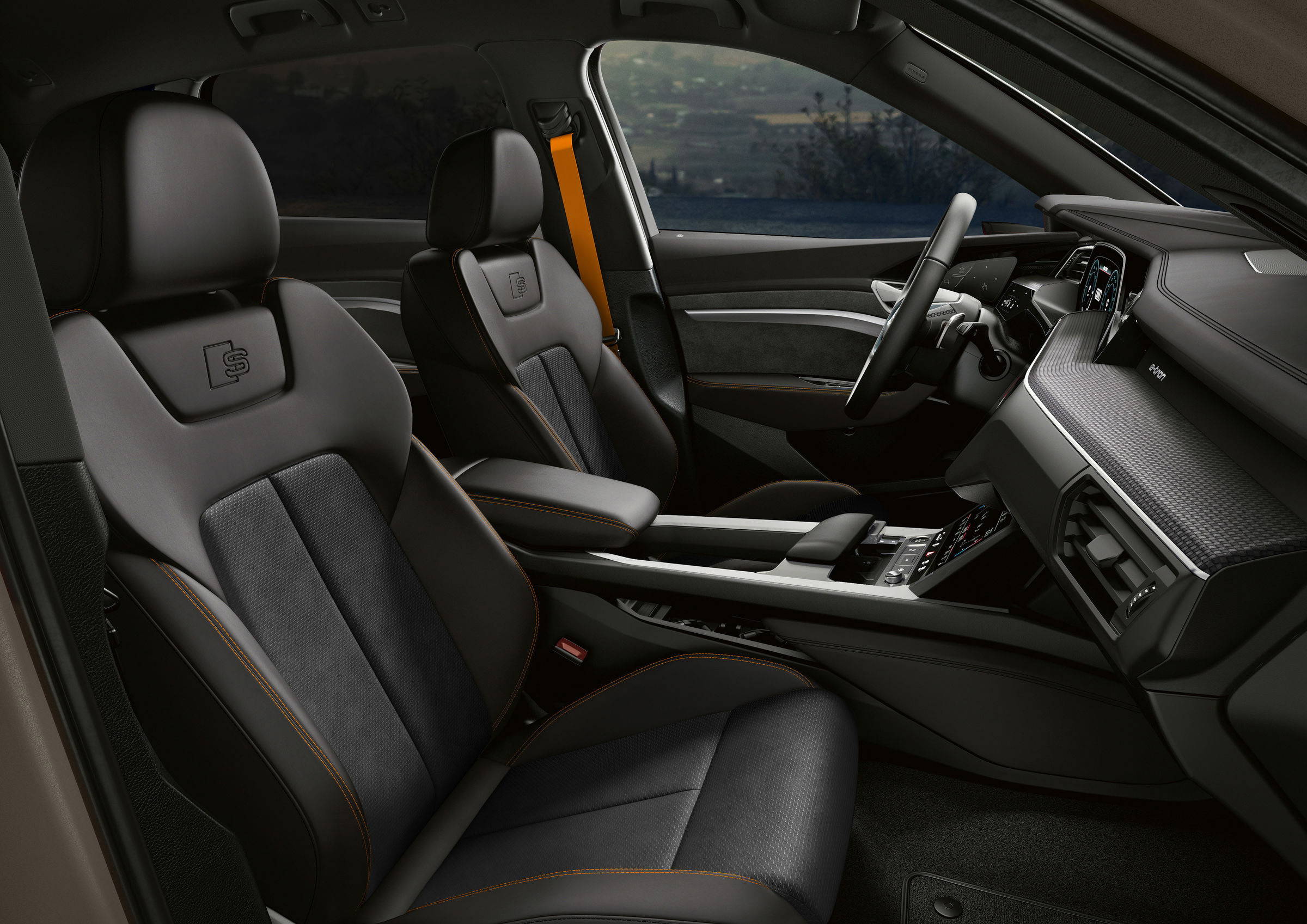VROOM WITH A VIEW
Audi’s new e-tron: When familiarity signals the remarkable

The sheer ordinariness of the e-tron, Audi’s new electric SUV, belies an extraordinary technological shift.
It felt like the earthquake that nobody really noticed. In the wake of all the noise, anger and brouhaha after COP26, I think we can take stock of what has happened to the motor industry.
Nobody is happy after a COP summit. There are those who say the agreements were weak and not enough is being done to mitigate against climate change, and there are those who say that the targets are impossible and will pile costs on to ordinary working people regulated by rich people sitting in wealthy cities with abundant, safe public transport. It’s possible they’re both right.
But when it comes to the motor industry, the dominant analysis seems to be that it was, in decarbonisation terms, a flop. With the US, China, Japan, Germany, Toyota, Volkswagen and Stellantis refusing to sign the Zero Emissions Vehicle accord – essentially an agreement to cease selling internal combustion cars in major markets by 2035 – the whole thing was a washout.
I’d like to humbly disagree. Adding the 33 countries that did sign the pledge to those with existing plans means that one in four cars sold in 2035 will be electric. Technological transitions are not switches. They can be affected by regulatory change, but they also occur for other reasons, such as economic incentive, design, engineering and culture.
There was a time when steamships shared waterways with sailboats, and when horse-drawn carriages shared roads with the early forms of the motor car.
The underlying dynamics of the non-signatories are an important part of this picture. Germany does not yet have a government after its election and couldn’t sign anything at COP26, despite the likely coalition partners offering their support for the 2035 phase-out date. You can count Germany as “in”.
The US did not sign, but General Motors and Ford did, meaning that, by 2035, using 2019 market share as a basis, more than 30% of American car sales will be electric by 2035, and this doesn’t allow for the possibility of exponential growth of the US-based electric vehicle (EV) start-ups, led, obviously, by Tesla.
Equally, because Canada did sign the accord and because the EU will phase out internal combustion cars and vans by 2035, more than 65% of US car exports in 2035 will go to countries that have phased out internal combustion. The US will become a leading EV manufacturer no matter what the White House does.
China has fraught diplomatic relations with the West and especially the UK, so the COP deal was never likely to be on their agenda. EVs are very much on China’s mind, though, with an official target of 25% of all sales by 2025 being “new energy vehicles” (which include hybrids, plug-in hybrids, fuel-cell cars and battery-electric cars). It is likely that China will smash this target on the back of electric cars sales, and analysts think NEV sales could rise to between 70% and 90% of sales by 2030.
Volkswagen left the accord alone, I suspect because it didn’t want to sign up to something outside of the EU’s 2035 phase-out process because its competitors (Toyota, Stellantis, BMW, etc) will no doubt try to lobby to water down the provisions in the EU directive. In that case, with Volkswagen’s internal compliance culture having been quietly and fundamentally overhauled since Dieselgate, it was never likely to sign. But Volkswagen is leading the electrification charge in Europe, and overtly supports the EU’s phase-out planning.
For BMW and Stellantis, the opposition to the EU plans and the COP accord can be best understood as a preparedness gap. After COP, again using 2019 market data, about 35% of BMW sales will be in internal combustion engine (ICE) phase-out markets, and, for Stellantis, the number is 48%. I’m not sure these companies are really ready for this. Toyota, the real outlier in all of this because of its truly global footprint in all kinds of markets, sees only 8% of its market turn away from ICE in 2035. That will no doubt be reflected in its industrial and product planning and lobbying in other key markets.
So, change is coming, and this will be reflected to a small degree in the local market over the coming year, despite the government’s absurdly regressive position on electric mobility. Coming in 2022, you can expect three electric Audis (e-tron, e-tron Sportback and e-tron GT), two electric BMWs (iX3 and i4), four electric Mercedes-Benzes (EQA, EQB and EQS, Mercedes-AMG EQS 55), the Rolls-Royce Spectre, Porsche Taycan GTS and, possibly, the Kia EV6, all in addition to the existing electric range from BMW (i3) and Porsche (Taycan, Taycan Cross Turismo).
I had a brief drive in the Audi e-tron around Cape Town and Hout Bay recently ahead of its launch next year, and although I cannot claim to have given it a full appraisal, I can say that the most endearing feature of the car is that it looks and feels like an Audi SUV. This is high praise, of course, but my point is that there is no performative design to express its different drivetrain. In traffic, most road users would have had no idea that the car is electric. This normalisation of electric drivetrains from one of the world’s biggest car companies is appealing.
Indeed, it was almost underwhelmingly “normal”, as much as a top-end Audi SUV is ever “normal”. It’s as though I had expected more drama. This normality is, in its way, an indication of the tipping point that we have come to in automotive drivetrains. In terms of how that car feels, its usability and practical application for life, you can choose a diesel or electric, much as you might have chosen between a petrol or diesel car.
Audi has promised me more time in the e-tron, but, for now, I can say that it is big and luxurious, most like the Q7 in feel. It carries its size and weight well, and – especially fitted with virtual side mirrors (which will need a great deal of getting used to) – is an exceptionally quiet and comfortable family car, blessed not with astonishing performance or corner-scything handling, or stand-out design, but something far more important: familiarity.
The move from diesel to electric has never been easier. You need not be brave or terribly clever or technically adept – merely the kind of person who can afford a large Audi SUV. That’s real change. DM168
Alexander Parker is a journalist, author and consultant.
This story first appeared in our weekly Daily Maverick 168 newspaper which is available for R25 at Pick n Pay, Exclusive Books and airport bookstores. For your nearest stockist, please click here.




















 Become an Insider
Become an Insider
Comments - Please login in order to comment.